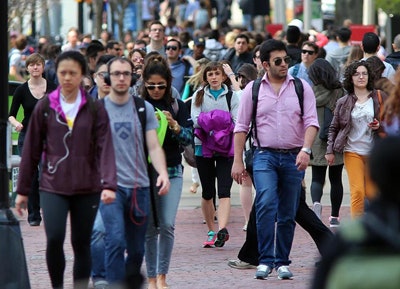Many schools focus on recruiting a diverse student body. But, once the students arrive on campus, not every institution spends a significant amount of time on retention. Neglecting retention strategies means that fewer students ultimately graduate from college and that shortcoming disproportionately affects minority students.
If colleges and universities want to see higher graduation rates among their minority students, then support after enrollment is the key. And here’s how it can be improved.
Changing the student population

By eliminating financial status as a consideration, low-income, minority applicants may have increased opportunities for admittance as the school doesn’t limit the number of students admitted based on factors like the receipt of funds from the Federal Pell Grant. As the minority population rises, other minority students will see the college or university as having a policy of inclusion.
Student support services
Onsite student support services can be a major factor in overall retention. This includes access to no-cost tutoring programs, work-study opportunities, and even financial aid assistance.
Many students dedicate less time to securing scholarships after they begin their college experience. And educational institutions should consider this a shortcoming in their financial aid services. If costs can be controlled for lower-income students through the acquisition of more financial assistance as they progress, retention rates can be improved.
If students are helped to find funding, they are less likely to have to work significant hours to help pay expenses. Most colleges and universities recommend students work no more than 10 to 15 hours per week while attending school full-time. However, low-income students may not have that luxury. As more hours are required, less time can be dedicated to their education. And, if the student ultimately has to change from a full-time class schedule to a part-time one, that student’s chances of graduating decline significantly.
Colleges and universities that fail to support the students they admit will see low-income, minority students disproportionately affected by the lack of options. But, creating support programs that are directed specifically to the needs of these students can increase graduation rates significantly.
Bringing it together
Educational institutions should consider it their responsibility to level the playing field during and after admissions. By removing the financial component from admissions and adding services to help lower-income, minority students, colleges and universities can see graduation rates rise across the board. And, once a reputation for providing support is earned, the level of diversity in applicants will rise, helping meet any diversity initiatives that may be present. Ultimately this creates a win for students and for the institution, and many would consider that an ideal outcome.
Matthew Lynch is a higher education consultant and owner of Lynch Consulting Group, LLC. He currently resides in Richmond, Virginia.
















